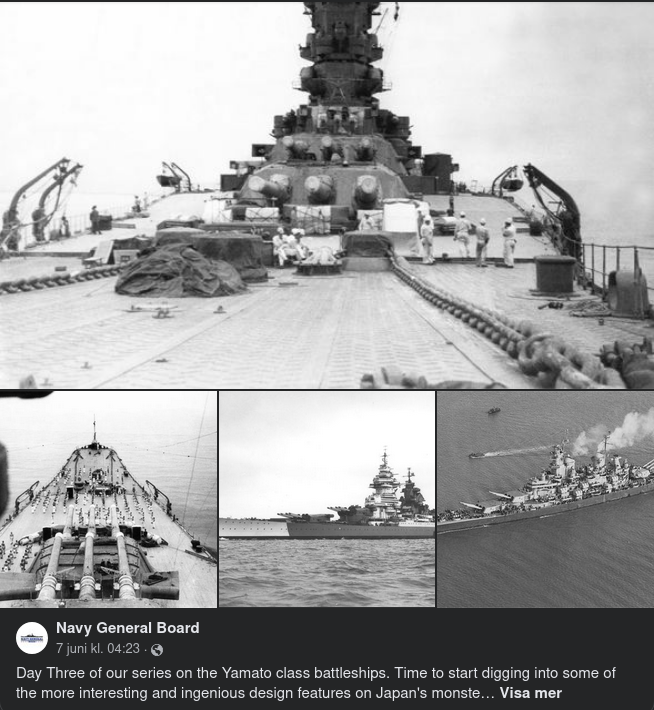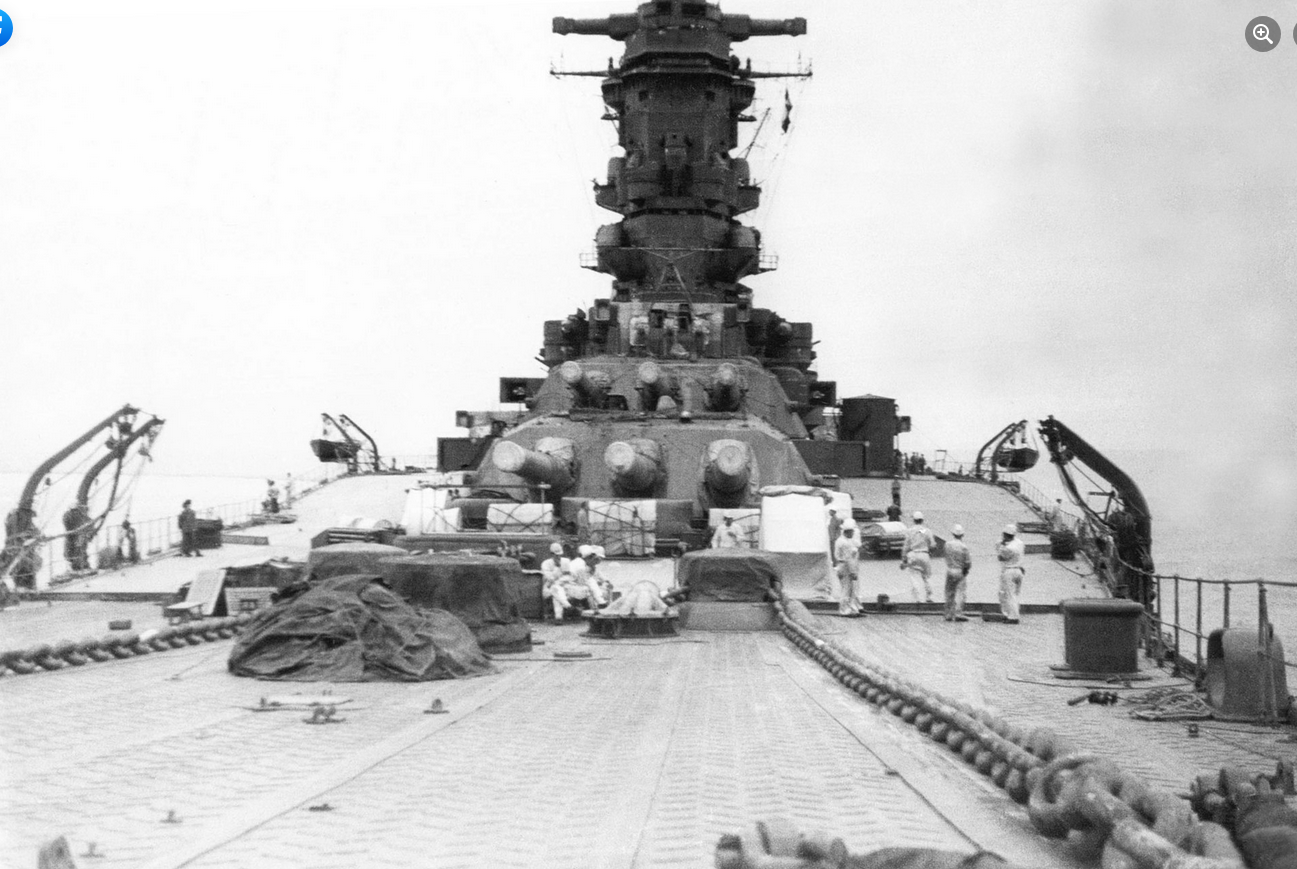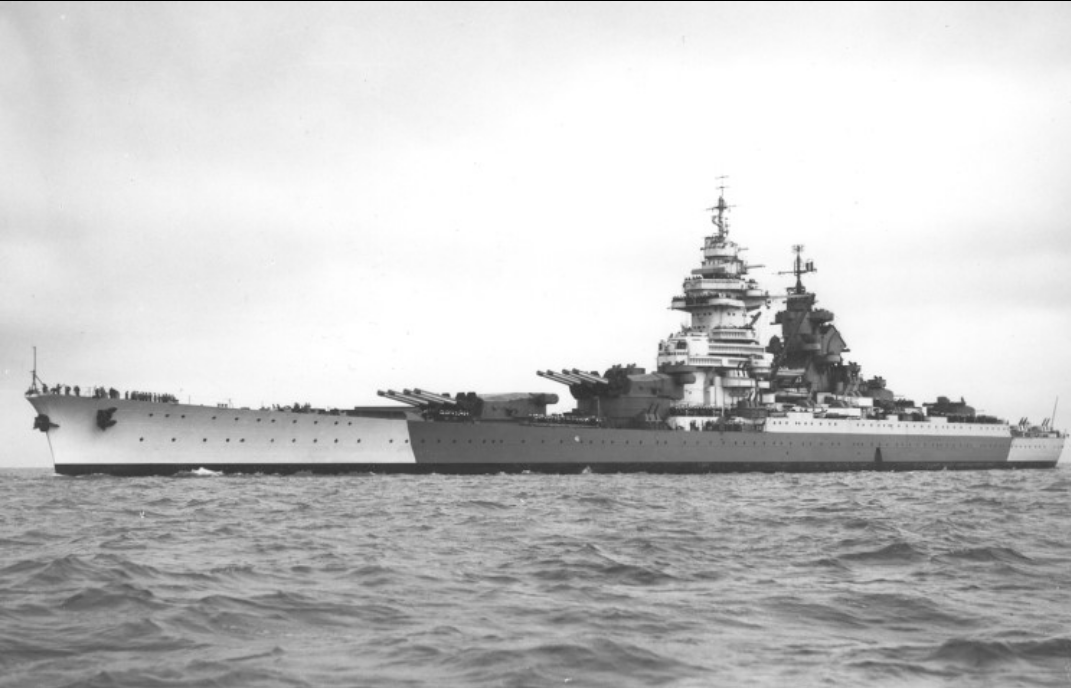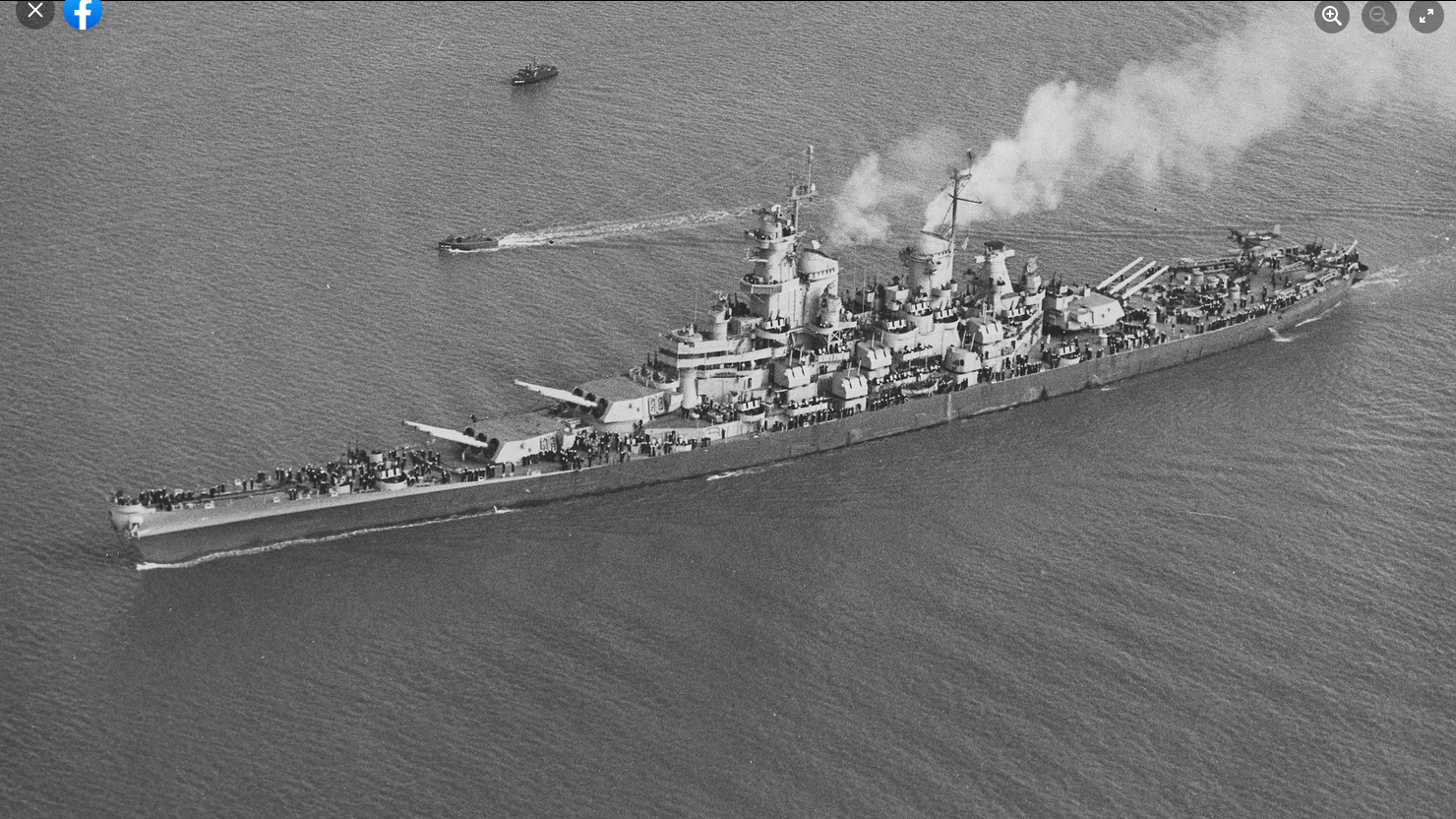Yamato I Japan
2023-06-09
Mmmm..

Day Three of our series on the Yamato class battleships. Time to start digging into some of the more interesting and ingenious design features on Japan's monster battleships.
I wanted to start with a design feature that is blatantly obvious in every photo of the battleship, but is also not that well understood. That feature is the peculiar sloping shape of the deck in the vicinity of the forward turrets. The deck slopes downwards in the area of the forward turrets and then rises back up as it approaches the bow. What did this accomplish?
The peculiar shape of the hull achieved several benefits. The spark notes version would go something like this:
- Turrets are large and complex mechanisms. They are also extremely heavy. The main battery turrets of the Yamato class weighed 2,730 tons apiece. These turrets rested on barbettes, heavily armored with thicknesses ranging from 380mm (15") to 560mm (22"), that were equally heavy. Rising well above the ship's waterline, the weight of these turrets/barbettes negatively impacted the stability of the battleship.
The sloping deck allowed the turrets/barbettes to be placed lower into the hull. The lower height helped increase stability while also saving considerable tonnage as less armor was needed to protect the shorter barbettes.
- Japanese designers had settled for placing some of the secondary armament on the centerline early in the design process. By having the 155mm (6.1") guns superfire over the main battery, they gained excellent firing arcs. Lowering the main battery allowed for the placement of the secondary guns in such a location without requiring excessively tall barbettes, further reducing tonnage.
- Behind the main and secondary turrets, the heavily armored conning tower could also be reduced in height, saving additional weight.
- The overall superstructure could be made lower and more compact.
- Coupled with the tower bridge, you do get smaller improvements with visibility, handling, the layout of the superstructure, etc.
The hull itself was also enhanced.
Most battleships had one of two hull forms. Stepped deck hulls and flush deck hulls.
The deck/hull of a stepped deck hull was broken. The main deck does not run the entire length of the ship uninterrupted. Rather it is broken at one or more places. See the third photo of the battleship Richelieu for an example of a stepped deck design.
Stepped deck hulls granted benefits such as additional interior volume, good for crew comfort. They also allowed heavy gun turrets to be set lower in the hull, improving stability and saving weight. With a raised forecastle deck, they could improve performance in bad seas thanks to the increased freeboard.
The other type of hull was the flush deck design. See the fourth picture of the battleship Iowa for an example.
The main deck was unbroken from stem to stern. It might curve gradually upwards towards the bow or stern, but no
breaks occurred.
Flush deck hulls, for the most part, were more structurally solid. They could better withstand external forces such as heavy seas, explosions, or battle damage. This was achieved at the cost of less internal volume, hurting crew accommodations and other things.
Japanese designers achieved a happy medium with the Yamato class hull form. The hulls retained the high structural strength of a flush deck on the forward hull while still enjoying some of the advantages of a stepped deck hull. A best of both worlds situation.
Of course, this hull form was not possible on all battleships. The prodigious volume of the Yamato class allowed for the unique hull form to be used. However, this same tremendous size also overshadows the fact that Japanese designers made every attempt to save weight where possible. The forward hull design is just one of the many innovative design features of the Yamato class.







Visa ditt stöd till det informationsarbete Carl genomför
Patreon
Swish

Scanna QR eller skicka till 076-118 25 68. Mottagare är Caroline Norberg.
